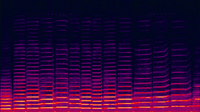Mathematics and music

Mathematics and music are like best friends. Music is all about how different sounds fit together to create a beautiful tune. And mathematics helps us understand how these different sounds fit together.
Let's start with some basics. You know how numbers go in a certain order, like 1, 2, 3, 4, and so on? Well, in music, there is a pattern too. Instead of numbers, we use musical notes like A, B, C, D, E, F, and G. Just like numbers, these notes have a special order too, and it's called a scale.
The most common scale is called the "major scale." It goes like this:
Do - Re - Mi - Fa - Sol - La - Ti – Do
These are the notes we use to make happy-sounding music. Imagine you're singing "Twinkle, Twinkle, Little Star" – those are all notes from the major scale.
Now, let's talk about rhythm. Rhythm is how fast or slow the music is played. It's like when you're skipping rope, and you have to jump at the right time – that's the rhythm. Just like how we use math to count how many times we have to jump, we use math to count the beats in music.
Music is divided into sections called measures. Each measure has a certain number of beats, and we count them using something called a time signature. The most common time signature is 4/4, which means each measure has four beats. So, when you clap or tap your foot to the beat of a song, you're using math to count the beats!
But that's not all – music also uses something called ratios. A ratio is a comparison between two numbers. For example, 1:2 means one thing is twice as big as the other. Ratios are used in music to create harmony, which is when sounds blend together in a pleasing way.
For instance, when you play two notes that have a ratio of 2:1, it creates a sound called an octave. That's why "Twinkle, Twinkle, Little Star" sounds nice when you sing it with someone else – that's because you're singing the same tune in different octaves!
Finally, let's talk about patterns. You know how you can make patterns with blocks or Legos? Well, in music, we use patterns too! We call them "melodies" or "chords." A melody is a series of notes played one after another, while a chord is when multiple notes are played at the same time.
Just like how you can make different patterns with blocks or Legos, you can make different melodies and chords in music. And, just like how you use math to count how many blocks or Legos you need for a certain pattern, you use math to create melodies and chords that sound good together.
So, there you have it – mathematics and music go together like peanut butter and jelly! Math helps us understand the patterns, rhythms, and ratios that make music sound beautiful.
Let's start with some basics. You know how numbers go in a certain order, like 1, 2, 3, 4, and so on? Well, in music, there is a pattern too. Instead of numbers, we use musical notes like A, B, C, D, E, F, and G. Just like numbers, these notes have a special order too, and it's called a scale.
The most common scale is called the "major scale." It goes like this:
Do - Re - Mi - Fa - Sol - La - Ti – Do
These are the notes we use to make happy-sounding music. Imagine you're singing "Twinkle, Twinkle, Little Star" – those are all notes from the major scale.
Now, let's talk about rhythm. Rhythm is how fast or slow the music is played. It's like when you're skipping rope, and you have to jump at the right time – that's the rhythm. Just like how we use math to count how many times we have to jump, we use math to count the beats in music.
Music is divided into sections called measures. Each measure has a certain number of beats, and we count them using something called a time signature. The most common time signature is 4/4, which means each measure has four beats. So, when you clap or tap your foot to the beat of a song, you're using math to count the beats!
But that's not all – music also uses something called ratios. A ratio is a comparison between two numbers. For example, 1:2 means one thing is twice as big as the other. Ratios are used in music to create harmony, which is when sounds blend together in a pleasing way.
For instance, when you play two notes that have a ratio of 2:1, it creates a sound called an octave. That's why "Twinkle, Twinkle, Little Star" sounds nice when you sing it with someone else – that's because you're singing the same tune in different octaves!
Finally, let's talk about patterns. You know how you can make patterns with blocks or Legos? Well, in music, we use patterns too! We call them "melodies" or "chords." A melody is a series of notes played one after another, while a chord is when multiple notes are played at the same time.
Just like how you can make different patterns with blocks or Legos, you can make different melodies and chords in music. And, just like how you use math to count how many blocks or Legos you need for a certain pattern, you use math to create melodies and chords that sound good together.
So, there you have it – mathematics and music go together like peanut butter and jelly! Math helps us understand the patterns, rhythms, and ratios that make music sound beautiful.
Related topics others have asked about:
